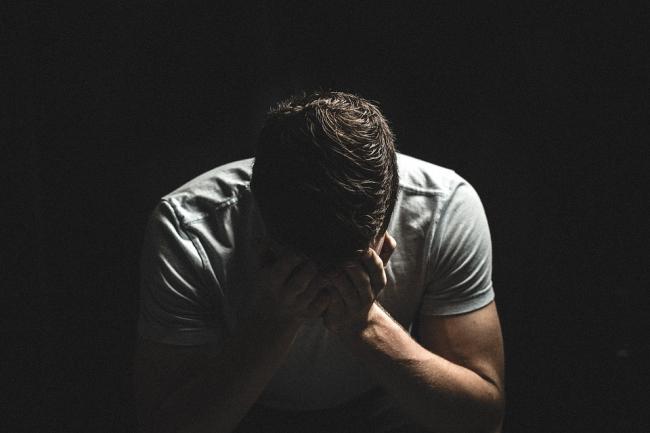This article is written by Seep Gupta, from Institute of Law, Jiwaji University. This is an exhaustive article which deals with domestic violence against men in India.
Table of Contents
Introduction
Mahesh was beaten and tortured by his wife daily in front of his son. His son’s behaviour was also getting affected because of daily nuisance and violence in the home. The violence and fights were so intense and loud that even neighbours got to know about their condition and they also weren’t unaware of what was happening in their home. But, there was nothing he could do. One day when Mahesh’s wife and son were not present at home, Mahesh hanged himself from the ceiling fan because he was done with the never-ending violence.
Spousal abuse is not something that is faced by only one gender. The general presumption or preconceived notions that have been into our society since bygone is that men are supposed to be strong, mighty and they are generally supposed to bottle up their emotions. If they show or expose their vulnerabilities then they are labelled as being sissy, effeminate, and many other derogatory terms.
Statistics on domestic violence against men in India
In a study of 1000 married men among the various age groups from 21-49 years of age in the rural villages of Haryana, 52.4% of males experience gender-based violence in India. 51.5% of males have experienced some sort of torture or violence at the hands of their wives or their intimate partners in their lifetime. 10.5% of males have experienced gender-based violence at the hands of their wives or intimate partners in the last 12 months. The most common spousal or domestic violence against men is emotional and physical is the second most common domestic violence against men.
IPV or Intimate Partner Violence can be experienced by any spouse whether wife or husband. Lack of education, middle-class values, one person earning a higher income, etc. are some of the major causes of IPV.
Besides women, men also experience gender-based violence in India. Most women experience violence so there is a stereotypical assumption among people that domestic violence is gender-specific which is not correct. India is a patriarchal or male-dominated society, so it is often hard to believe that even males can be victims of domestic violence.
Comparison with other countries
1 in 9 men in the United States of America experiences some sort of domestic violence from their Intimate partner or from their wives. 1 in 7 men has been the victim of some sort of physical violence by their wives or by their intimate partner.
In the United Kingdom, two out of five victims of domestic violence are men. This discards the popular belief that only women can be the victim of domestic violence. According to men’s rights campaign group parity domestic violence against men often go unnoticed and most of the time their attackers are not punished by the police.
According to the British crime survey, in the year between 2004-2005 and 2008-2009, 40% of the domestic violence victims were men. In recent years it has reduced to 37.7%.
Men are most likely to be the victim of domestic violence from strangers and in public places. In Australia, 1 in 16 men has been subjected to domestic violence since the age of 15 in form of physical or sexual torture from their wives or intimate partner or from the person they are cohabiting with. From 2012-13 to 2013-14, one man is killed in a month from the result of facing domestic violence from their current or their previous partner.
These surveys and studies from various countries indicate that domestic violence among men at the hands of their wives or from their intimate partner is not uncommon. Appropriate provisions should be there to deal with domestic violence in a more neutral way.
Reasons why domestic violence cases against men go unreported
There are many reasons for which men often do not reveal the violence they face by their spouses or by their intimate partners.
- General Stereotypes against males– Men often feel discriminated against or feel uneasy in opening up about the violence that they face because they feel ashamed that they will be judged and will be labelled as wimpy and effeminate. They think their struggle against violence will go in vain because of gender-specific laws and provisions that are given in the Indian Constitution. They feel that they have failed the role of protector in nurturing their families.
- Fear of fake cases– Men often feel that revealing the violence can cause unnecessary nuisance and they do not want to face the legal consequences because of the gender-biased or gender-specific laws in our Constitution. They feel that they have to leave their families and they don’t want to lose custody of their children which is often a cumbersome process.
- Societal and family pressure– Most of the Indians continue to live with their families even after their marriage. Because of this factor, men feel ashamed of opening up about the violence. The society also plays a crucial role in nurturing gender biased laws and stereotypes against a particular gender.
- Denial– Mostly people feel that domestic violence can only happen to a woman. And they live in denial when they get to know that man can also be a victim of domestic violence. So, basically, people never really want to talk about it.
Role of gender biased laws in making the situation worse
Gender is a social construction and it is often influenced by race, caste, country, class, culture, sexual preference, ability, rituals, etc. In many south Asian countries such as India, gender roles are very rigid. This rigidity gives rise to gender biases and stereotypical notions. Men who face domestic violence at the hands of their wives or their intimate partners, these attackers who are usually women are immune to the provisions related to gender violence that is given in the penal provisions i.e. Indian Penal Code of the country.
According to Section 498A of the Indian Penal Code 1860, only a man can be held liable for cruelty to his wife. There is not any subsection or any provisions given in the statute that will make a woman liable for domestic violence. When men try to open up and to report about the torture and physical violence that they are facing, no one listens to them, not even the police. Complaining about domestic violence by a man can often label a man as ‘effeminate’ or ‘feeble’ by the Indian society.
Many men think that situation will get better shortly because of this reason too they do not report about the domestic violence that they face. Any type of violence whether physical or mental is the gross violation of human rights. Unreported and unsaid cases of domestic violence can ultimately lead to separations, bitter fights, divorces, depression, and even suicides.
Because of the biased laws in the Indian Penal Statute which favour women, there are a plethora of false cases where women falsely alleged a man for rape or for domestic violence and the sad thing is that these biased laws automatically assume that a man can never be the victim. Women do not need to give any sort of evidence to prove their authenticity. They are presumed to be true creatures by the biased laws.
According to the 2002 report by the World Health Organisation, women think of committing suicides more often than men while men die of suicides more frequently. Continuous exposure to violence can cause many physical and mental diseases such as depression, suicidal tendencies, and chronic physical disorders such as cancer, heart attacks, HIV/AIDS, etc.
Review of literature
Kimmel M. (2001) in his book on ‘Male Victims of Domestic Violence’ said that domestic violence is one of the major problems and men also suffer from domestic violence at the hands of their wives or intimate partners. Efforts to prevent domestic violence and its successful implementation have followed years of research and advocacy on behalf of their victims. New laws, police procedures, medical and forensic research have improved the conditions of men who suffer from domestic violence. In recent years, domestic violence has become a hot topic among activists, individuals, and many organizations. After decades of research, many political activists are now shouting this at the top of their voice that both men and women can be the victim of domestic violence in roughly the equal number. Despite several studies that have suggested that only women can face domestic violence at the hands of men, the other 100 empirical studies suggest that the victims of domestic violence can be both men and women. This has provoked the enthusiastic ‘male gender activists’ that policymakers should keep in mind regarding the policies related to domestic violence who made policies and laws mainly focusing on women.
Lorber. J. (1991) in his book, ‘The Social Construction of Gender’ explained that gender is socially constructed and is influenced by many factors. People often misunderstand the term gender and sex. They are quite different. In the book sex refers to what we inherit, such as male or female and gender is what we learn. Gender is nothing but a device that is used by society to control its members. Gender sometimes as social class and race can be used to make stereotypes and prejudices against people. Prejudices are a set of attitudes that are offensive to one section of the society, while discrimination is the overt negativity towards a person depending on his superfluous identity. Also, these books seek to explain various stereotypes and gender-based discrimination towards both genders. It is also given in the book that gender identity is influenced by social variables and it has almost nothing or very little to do with the biological variables.
Gender neutral laws – need of the hour
Human rights and gender equality belongs to both men and women. In today’s times where men are falsely accused of rapes, domestic violence, and sexual assault, gender-neutral laws are needed for the hour. Domestic violence, this term nowhere indicates that only women can be the victim of domestic violence, men can also be the victim and not the only perpetrator. Domestic violence should be considered as spousal violence as it is not only restricted to women.
In India, Domestic violence laws only protect women and not men. It gives a false presumption that men can only be the perpetrator and not the victim. Domestic Violence against men is gradually increasing day by day. Hence, special provisions and amendments are required to make gender-neutral laws that will help the victims in getting remedy and punishment for the culprit irrespective of gender. Specific laws and amendments are needed to protect both of the spouses from domestic violence that is still prevalent in our society.
Conclusion
In recent times due to modernization and westernization, societal values, culture, norms have changed a lot. Earlier men were seen as protectors of their family but nowadays both men and women are equally working, raising and managing their homes with equal contribution to their incomes. Men have now opened up about the domestic violence that they face and now they have started sharing their pain, agony, and their struggles openly. Men are no longer stronger than women.
It’s high time that statute and laws too should recognize their problem as a social problem or issue. Domestic violence against men can be recognized with effective changes in the laws, by creating awareness and by breaking stereotypes and preconceived notions.
References
- https://journals.sagepub.com/doi/full/10.1177/2631831819894176
- https://www.aihw.gov.au/reports/domestic-violence/family-domestic-sexual-violence-in-australia-2018/contents/summary
- https://ncadv.org/statistics
- https://www.theguardian.com/society/2010/sep/05/men-victims-domestic-violence
- http://www.ijcm.org.in/article.asp?issn=0970-0218%3Byear%3D2019%3Bvolu me% 3 D44%3Bissue%3D1%3Bspage%3D35%3Bepage%3D38%3Baulast%3DMalik
- https://shodhgangotri.inflibnet.ac.in/bitstream/123456789/5574/2/02_synopsis.pdf
LawSikho has created a telegram group for exchanging legal knowledge, referrals and various opportunities. You can click on this link and join:
 Serato DJ Crack 2025Serato DJ PRO Crack
Serato DJ Crack 2025Serato DJ PRO Crack











 Allow notifications
Allow notifications



